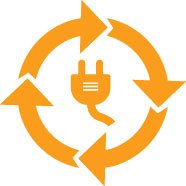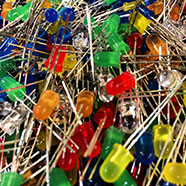What’s it for?
Before anything, to have fun. To play is one of the most important activities in kids’ formation. Obviously, playing activities doesn’t need to be made with objects and, even less, with sophisticated electronic equipment. But, new generation’s interest ant taste for technologies is huge. And being able to explore it to exercise imagination and the playful side, without previous rules or strings attached is also wonderful.
When used in schools, it helps to strengthen self confidence, the ‘I can’ feeling and it brings the comprehension that everything around us can be improved and that they can do it, which is fundamental to believe that we can make the world a better place.
By using the kit, kids will be able to create art and test new forms of expression, learning to use creativity to find solutions.
They can explore complex ideas and without fear, dealing with the risk and understanding error as a residue of a positive process of creation and innovation, and not as something to fear and avoid at all costs.
The simplicity of the kit and its uses also works as an entrance to electronic and programming logic, themes that, still today, are mistaken as something complex and exclusive.
The basic concepts of electronic and of the ordinary components, such as LEDs and buttons, helps in the comprehension of sensors and actuators and in acquiring taste and losing the fear on the subject.
Environmental and economic sustainability
RUTE is also an important activity to understand the importance of sustainability. Being it on better known dimension of the term, related to environment, because of the reuse of electronic scrap.
But also in a broad dimension of the sustainability, allowing people to produce, fix and improve what they use. And last, but not least, by dropping barriers that inhibits creativity and strengthen self confidence, it helps to demystify, spread and democratize innovation, generating local and sustainable economic development.
By creating prototypes, people also get practical notions on projects science, which helps a better understanding of difficulties and needs in a real project.
They find that there’s a delicate balance between technical difficulties, efforts and attractiveness, an important comprehension to generate innovation.
The prototyping practice is itself important, because it’s important the notion that we can solve our problems without depending on other’s.


